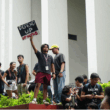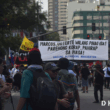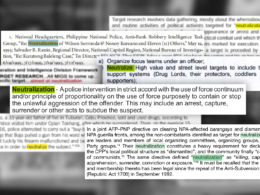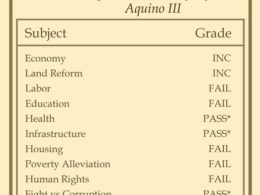Fifty-seven and counting.
A week after the brutal fate that left the whole world in rage, various questions were raised in an attempt to grasp the gruesome story that befell our fellow countrymen. The Maguindanao massacre is deemed as the worst election-related violence in the country.
Maguindanao, located in the Autonomous Region in Muslim Mindanao, is bordered by Lanao del Sur in the northwest and Sultan Kudarat in the south. It is considered one of the poorest provinces in the country. With its colorful Sultanate history, Maguindanao is filled with powerful political clans, private armies and Moro secessionists.
Amongst the political clans reigning oligarchies in the province, the Ampatuans, who seemed to wield power in the province, are pointed as the masterminds of the massacre which caused the life of another clan’s member—Mangudadatu’s wife. What has happened among their families recently is history.
Violence and the “rido” culture
The violence in Maguindanao can be attributed to what the Arroyo administration claims to have long been preventing: the ‘rido’ culture.
According to an article in Philippine Daily Inquirer, ‘rido’ or clan feuding is also blamed for the mass killing. Rido, however, is common in the province and other Moro communities.
The article discussed that in Maguindanao, ‘rido’ or “ukag” is directly associated to the concept of “kanaman,” pertaining to a deep sense of personal dignity and honor, and self-respect. When this honor is violated, the aggrieved retaliates to the extent of executing a murder—which, in turn, can invite vengeance.
Obtaining justice is expected upon heads of families or clan leaders. And clan members should support the effort to defend their collective honor. This collective responsibility is partly explained by the Maguinadawons’ close family ties.
Though rido may be rooted in culture and Maguindanawon’s values, the existence of this is a result of the absence of justice brought about by the inefficiency and ineffectiveness of the justice system and weak governance. Also, clans in a rido have easy access to guns that strengthen their bloody campaigns against each other.
It may not be surprising that locals would warn visitors to be indoors before it gets dark and see the road empty. The culture of violence in Maguindanao has planted deep fears amongst the locals, and as the night unfolds, ‘silence’ harbors on the land.
Sources
http://pcij.org/stories/young-guns-young-terror/
http://pcij.org/stories/amid-the-fighting-the-clan-rules-in-maguindanao/
http://newsbreak.com.ph/index.php?option=com_content&task=view&id=7148&Itemid=88889070
http://www.abs-cbnnews.com/nation/11/25/09/mangudadatus-offered-posts-avoid-conflict-ampatuans
This article was retrieved from a Wayback Machine archive of UPJC’s old website on Feb. 7, 2010, 04:47:20 GMT.







